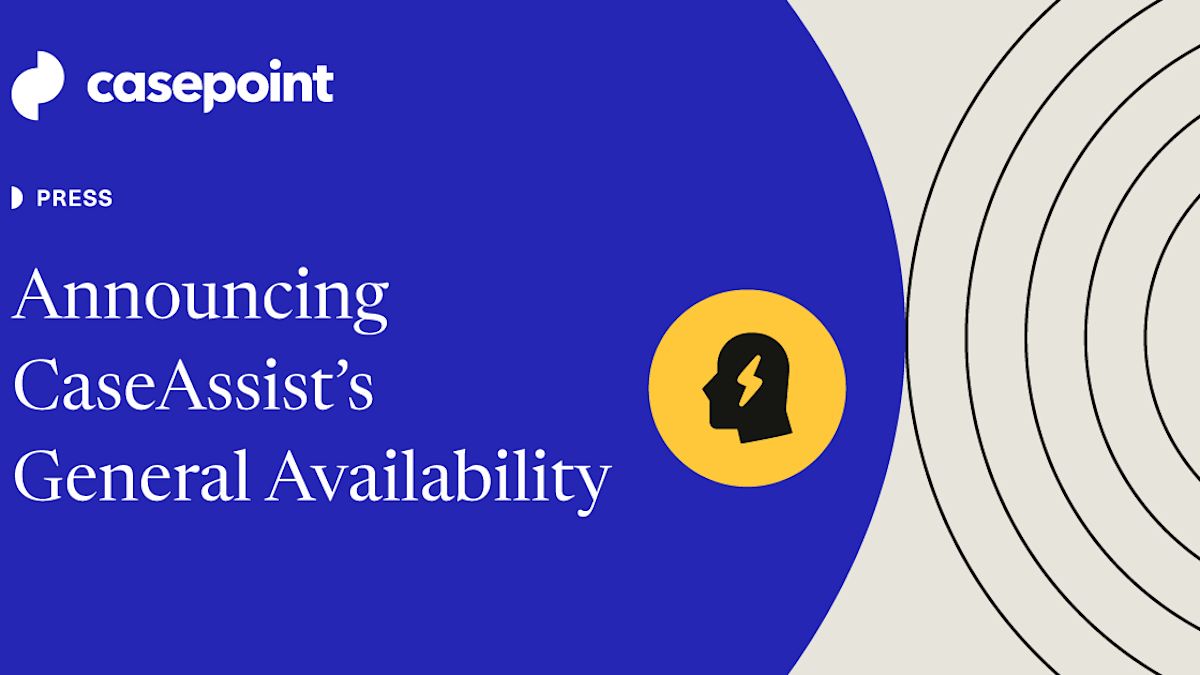
Casepoint CaseAssist: Complete Buyer's Guide
AI-powered eDiscovery platform for document review efficiency
Casepoint CaseAssist positions itself as an AI-powered eDiscovery platform targeting mid-market and Am Law 200 firms seeking document review efficiency through proprietary Active Learning technology that adapts to case-specific patterns without requiring external cloud AI dependencies.
Market Position & Maturity
Market Standing
CaseAssist operates as an established player in the eDiscovery market with documented enterprise-level security features and 24/7 production support[77].
Company Maturity
The vendor demonstrates business stability through multi-year customer partnerships and expansion of CaseAssist usage across additional matters[74].
Proof of Capabilities
Customer Evidence
Lewis Roca's implementation enabled handling large document volumes under budget constraints[71].
Quantified Outcomes
Fortune 500 companies achieved $175K-$200K cost savings in multilingual reviews[75].
AI Technology
CaseAssist's technical foundation centers on proprietary Active Learning algorithms that operate independently of Azure OpenAI integration[58][70].
Architecture
The platform's architecture supports specialized multilingual processing capabilities, with particular strength in Japanese-English document handling[75].
Primary Competitors
Primary competitors include Relativity, Everlaw, and DISCO.
Competitive Advantages
CaseAssist's multilingual processing strength, particularly Japanese-English document handling[75], exceeds general-purpose platform capabilities.
Market Positioning
CaseAssist differentiates from market leaders through proprietary Active Learning algorithms that operate independently of Azure OpenAI integration[58][70].
Win/Loss Scenarios
Win scenarios favor CaseAssist when organizations require specialized multilingual processing, construction litigation support, or data control priorities.
Key Features

Pros & Cons
Use Cases
Featured In Articles
How We Researched This Guide
About This Guide: This comprehensive analysis is based on extensive competitive intelligence and real-world implementation data from leading AI vendors. StayModern updates this guide quarterly to reflect market developments and vendor performance changes.
77+ verified sources per analysis including official documentation, customer reviews, analyst reports, and industry publications.
- • Vendor documentation & whitepapers
- • Customer testimonials & case studies
- • Third-party analyst assessments
- • Industry benchmarking reports
Standardized assessment framework across 8 key dimensions for objective comparison.
- • Technology capabilities & architecture
- • Market position & customer evidence
- • Implementation experience & support
- • Pricing value & competitive position
Research is refreshed every 90 days to capture market changes and new vendor capabilities.
- • New product releases & features
- • Market positioning changes
- • Customer feedback integration
- • Competitive landscape shifts
Every claim is source-linked with direct citations to original materials for verification.
- • Clickable citation links
- • Original source attribution
- • Date stamps for currency
- • Quality score validation
Analysis follows systematic research protocols with consistent evaluation frameworks.
- • Standardized assessment criteria
- • Multi-source verification process
- • Consistent evaluation methodology
- • Quality assurance protocols
Buyer-focused analysis with transparent methodology and factual accuracy commitment.
- • Objective comparative analysis
- • Transparent research methodology
- • Factual accuracy commitment
- • Continuous quality improvement
Quality Commitment: If you find any inaccuracies in our analysis on this page, please contact us at research@staymodern.ai. We're committed to maintaining the highest standards of research integrity and will investigate and correct any issues promptly.